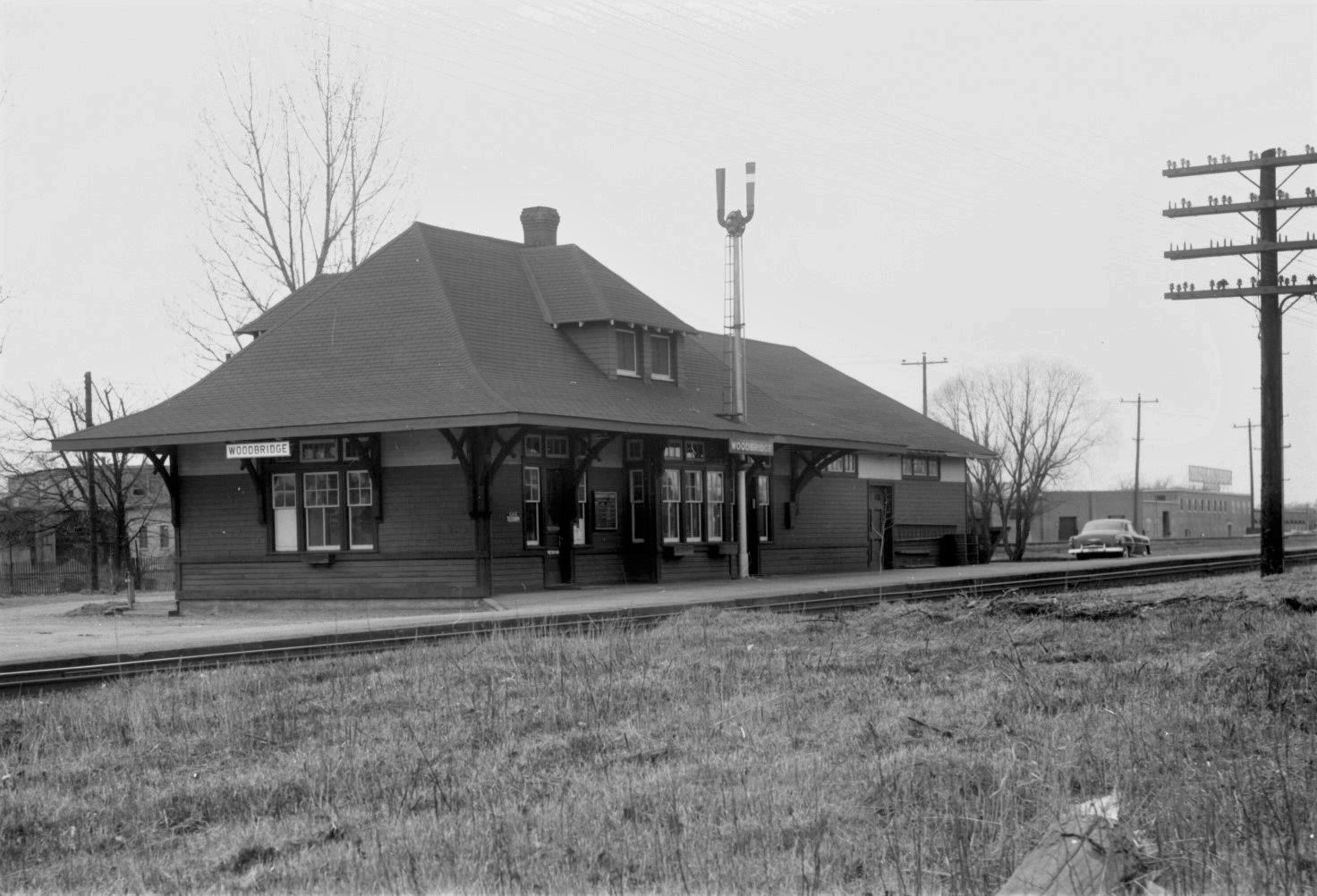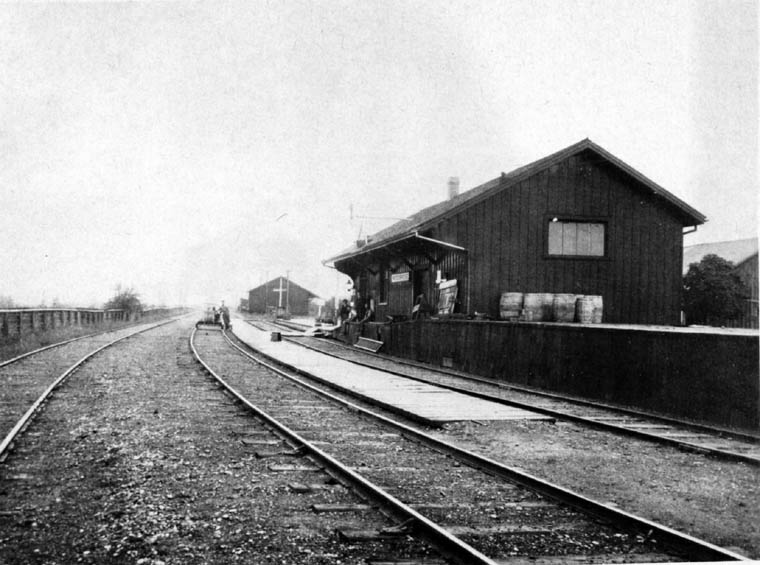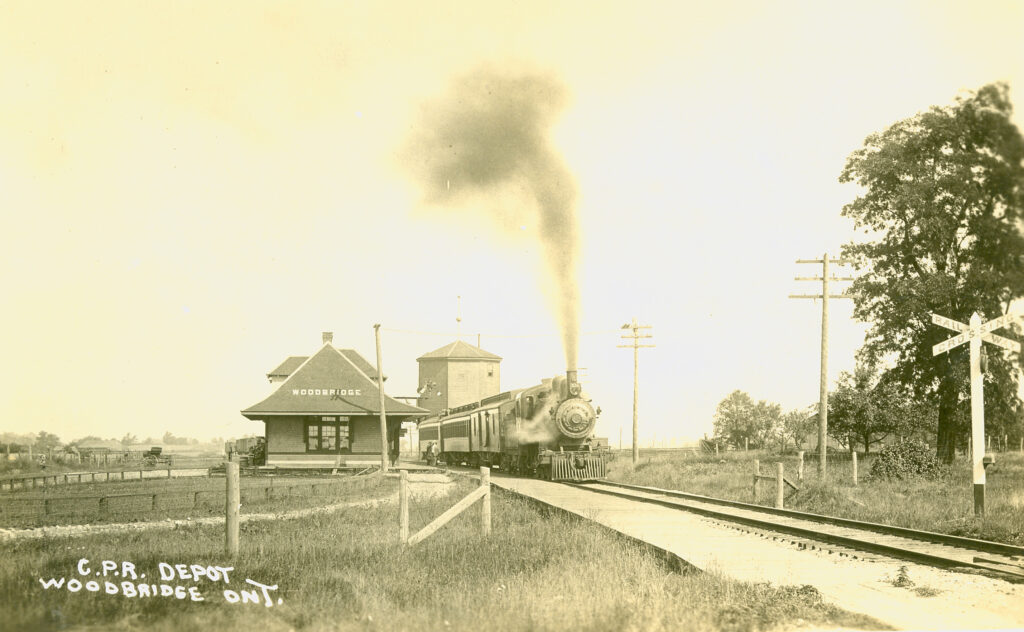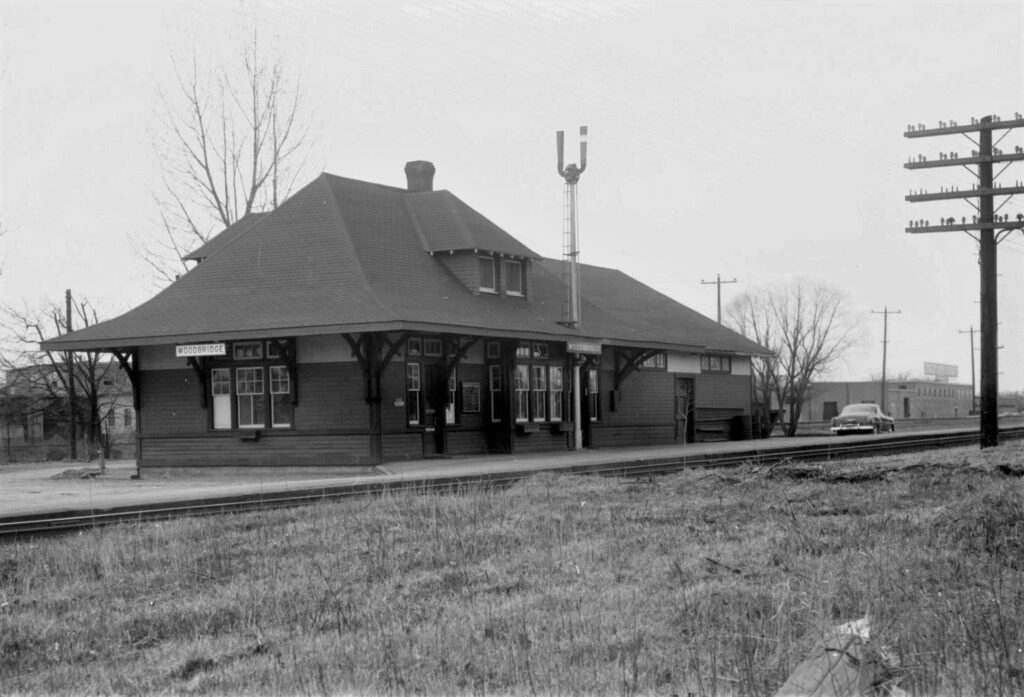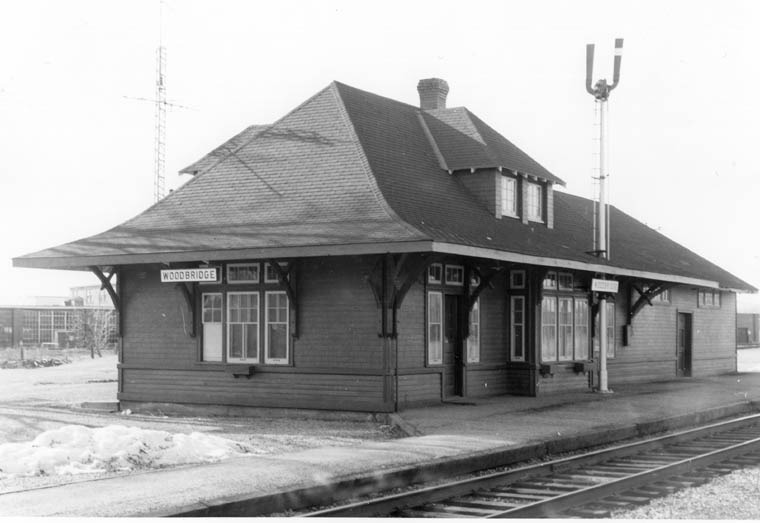Summary
Woodbridge Station was built in 1870 as construction of the narrow-gauge Toronto, Grey & Bruce Railway was progressing northward from Toronto. It was a simple wooden frame structure with a lean-to roof, located on Woodbridge Avenue just west of Kipling Avenue. The station’s opening was delayed until the line was complete up to Orangeville, and the first revenue passenger train arrived in Woodbridge on September 18th, 1871. However, the “formal” opening of the railway did not occur until November 4th. Four trains stopped in Woodbridge per day upon its opening.
As the TG&B grew in size, the much larger Grand Trunk Railway and Canadian Pacific Railway both sought to gain control of it. The Grand Trunk laid the groundwork by agreeing to fund its conversion to standard gauge in 1881. However, they would ultimately have insufficient funds to acquire the TG&B, which instead went to Canadian Pacific in 1883. After Canadian Pacific’s transcontinental line was complete in 1885, the line through Woodbridge became an important connection to the west. Trains would bring passengers to Owen Sound where they could then take a steamship through the Great Lakes to Port Arthur, then back on a train to points west.
In 1908, Canadian Pacific established a rail connection from the former TG&B line north of Woodbridge at Bolton to its existing transcontinental line in Sudbury. This change vastly increased the rail traffic on the line, requiring it to be straightened and regraded in several areas. South of Woodbridge, the meandering curves and wooden trestle around the Humber River were entirely removed and a new steel bridge was built over the river. In Woodbridge, the rail line was moved as much as 270 metres to the east and the grade was raised above the surrounding roads. The original station located on the old alignment was closed and torn down, and a new station was built less than a kilometer to the north along Kipling Avenue. It was larger than its predecessor with a second floor containing the station agent’s living quarters. The first floor had a waiting room and the station agent’s office, as well as a large baggage room extending from the north side of the building. At its peak, Woodbridge saw a total of 13 passenger trains per day in 1921.
As automobiles became a more popular mode of transportation in the early 20th century, passenger ridership began to decline. Some of the lines affected the earliest by this trend were less profitable branch lines which had relied on rural communities with few other options for transportation. Further affected by the onset of the Great Depression, the former TG&B line between Bolton and Orangeville was abandoned in 1932. Ridership worsened after the completion of Highway 400 in 1952, which ran almost parallel to the railway and served most of the same communities. The station was closed to passengers during the mid to late 1960’s, and it was torn down in 1971.
Condensed Station Info:
| Location: | Served By: | Current State: | Date Built: | Date Demolished: |
| Kipling Avenue at Porter Avenue | Toronto, Grey & Bruce (1871 – 1883) Canadian Pacific (1883 – 1960’s) | Demolished | 1871 (First) 1908 (Second) | 1908 (First) 1970’s (Second) |


